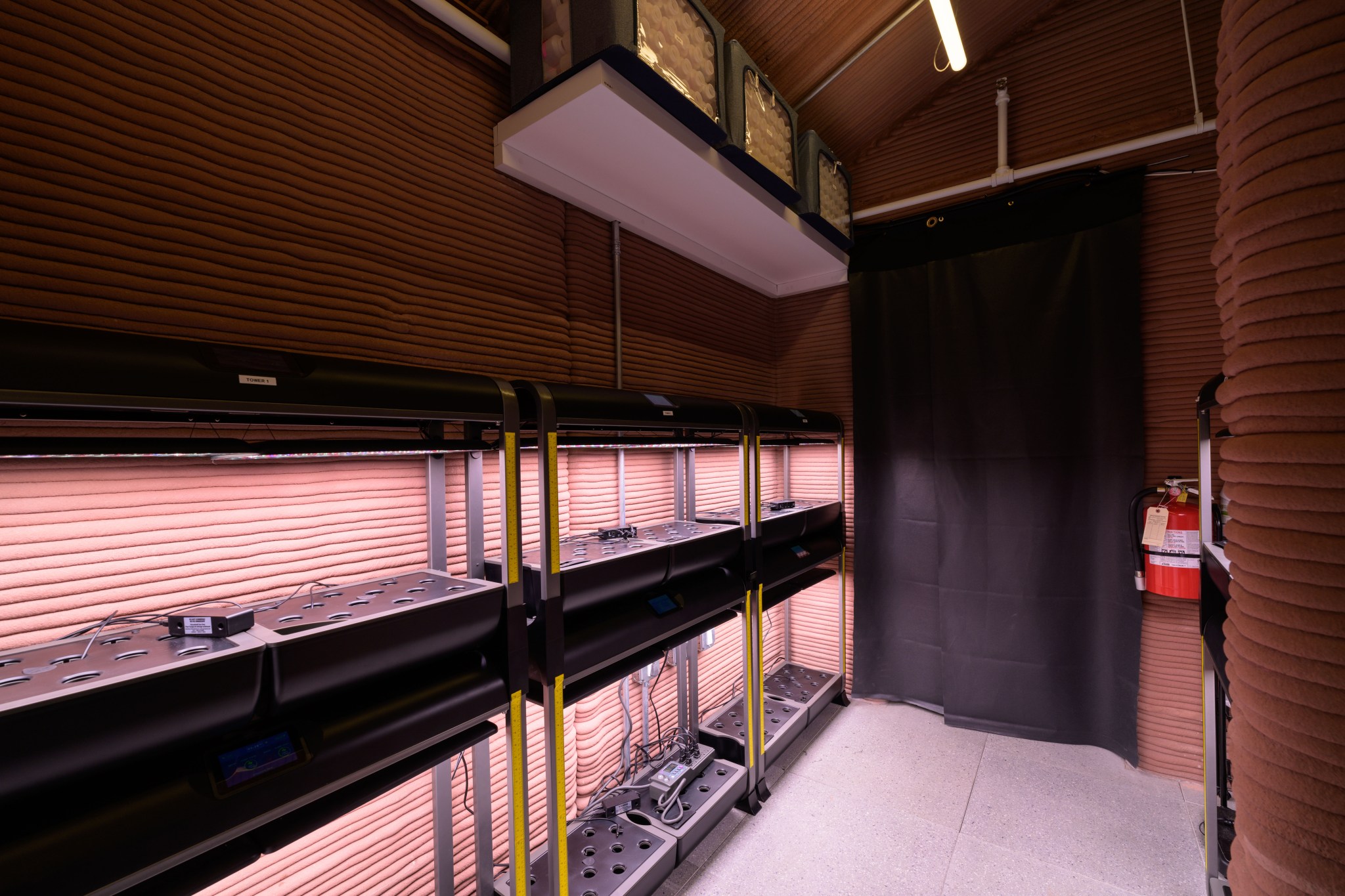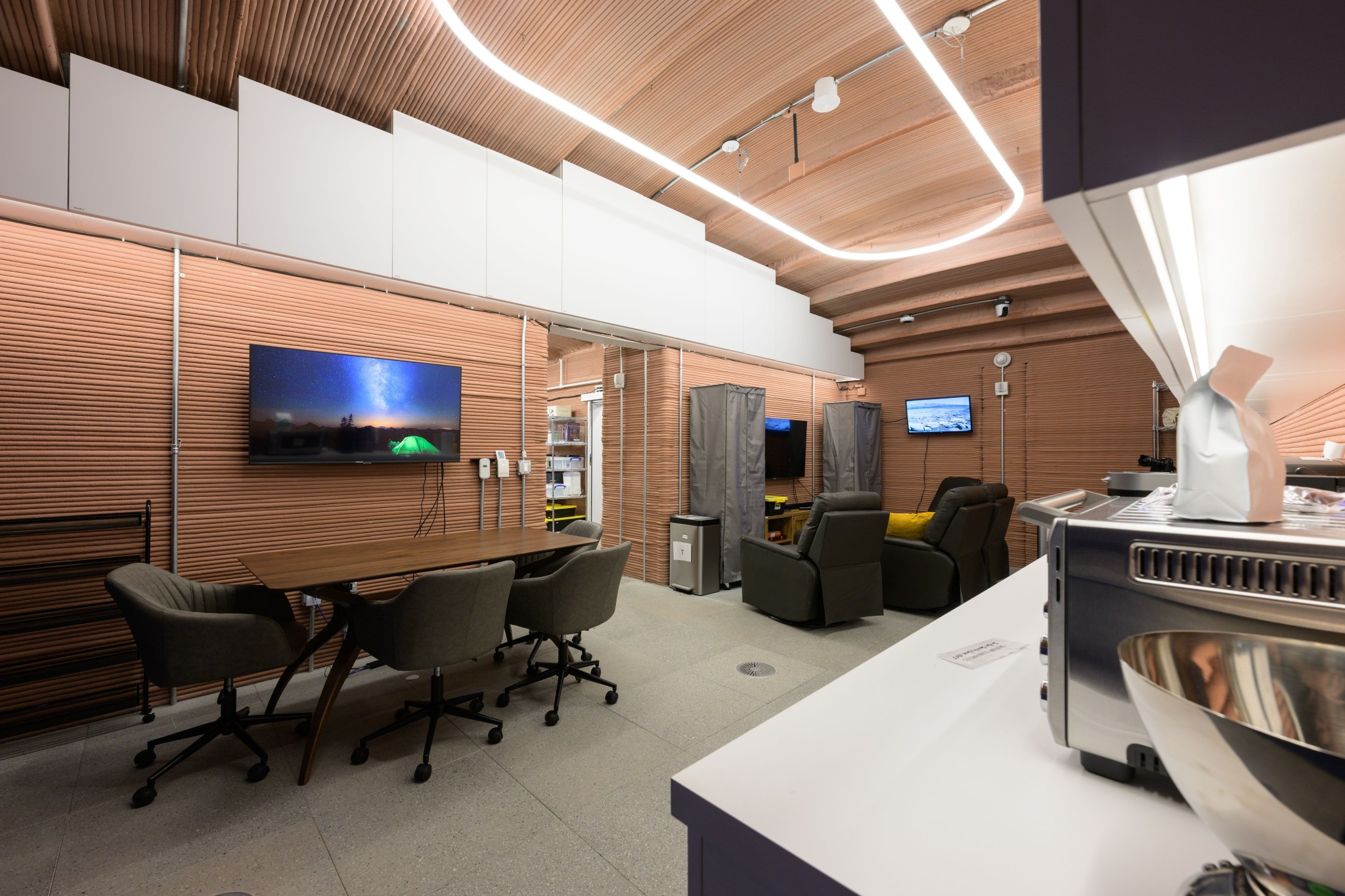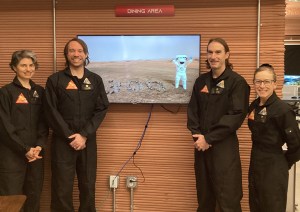The first crew to live and work for a year in a NASA-run ground-based, simulated Mars habitat won’t have the luxury of fresh food deliveries, but they will have the chance to grow some fresh produce.
NASA’s Crew Health and Performance Exploration Analog (CHAPEA) mission 1 crew began their mission June 25 at NASA’s Johnson Space Center in Houston, after several weeks of training to acclimate to habitat life and mission operations, as well as safety, communication, and team dynamics.
During the first of three one-year missions, the four-person crew will carry out different types of mission activities, including testing various food systems. Some crop growth experiments, along with other activities such as simulated “Marswalks,” robotics operations, habitat maintenance, personal hygiene, and exercise, will test the endurance and impact of isolation on the crew.
For future long-duration exploration missions, the planned food system includes a combination of prepackaged, shelf-stable foods, and the ability to grow some crops during the mission.
“Nutrition will be a cornerstone of success for space exploration missions where the food system is limited,” said Scott Smith, NASA’s CHAPEA co-investigator for nutritional biochemistry. “Key factors for a successful mission include maintaining dietary intake and body mass, monitoring and managing food supplies, and maintaining positive crew interactions. These factors and more will play out during CHAPEA and will provide knowledge to enable successful future space exploration.”
During future missions to Mars, food provisions likely will be sent ahead of the crew, limiting the possibility for changes or resupply. There won’t be any way to send fresh fruits and vegetables or tailor menus for individual astronauts, both of which are standard items delivered in resupply spacecraft to the International Space Station.
The CHAPEA mission will evaluate this more limited Mars-realistic food system for its ability to support crew health and performance over the longer duration mission.
“We know that food choice becomes more important to crew with increasing mission duration, and it is important to understand how these restrictions relate to nutritional intake, health, and performance before we implement them on missions that require months for crew to return to Earth,” NASA’s CHAPEA principal investigator Grace Douglas said.
During segments of the mission, the crew will be able to grow some crops. The crop growth system inside the CHAPEA habitat is similar to systems used for indoor home gardening and will provide water, nutrients, and lighting that can support the growth of leafy crops, herbs, and small fruits.
“Salad crop production may supplement the packaged meals, reduce menu fatigue, and provide a creative outlet for the crew to add a variety of fresh produce to their diet,” said Gioia Massa, crop production team lead for CHAPEA at the agency. “Growing plants may also provide psychological benefits for astronauts living in isolated, confined environments away from Earth, and we hope to capture data on both of these aspects.”
NASA is leading a return to the Moon for long-term exploration. Through the Artemis missions, NASA will land the first woman and first person of color on the Moon, using innovative technologies to explore more of the lunar surface than ever before. Lessons learned on and around the Moon will prepare NASA for the next giant leap: sending astronauts to Mars.






























